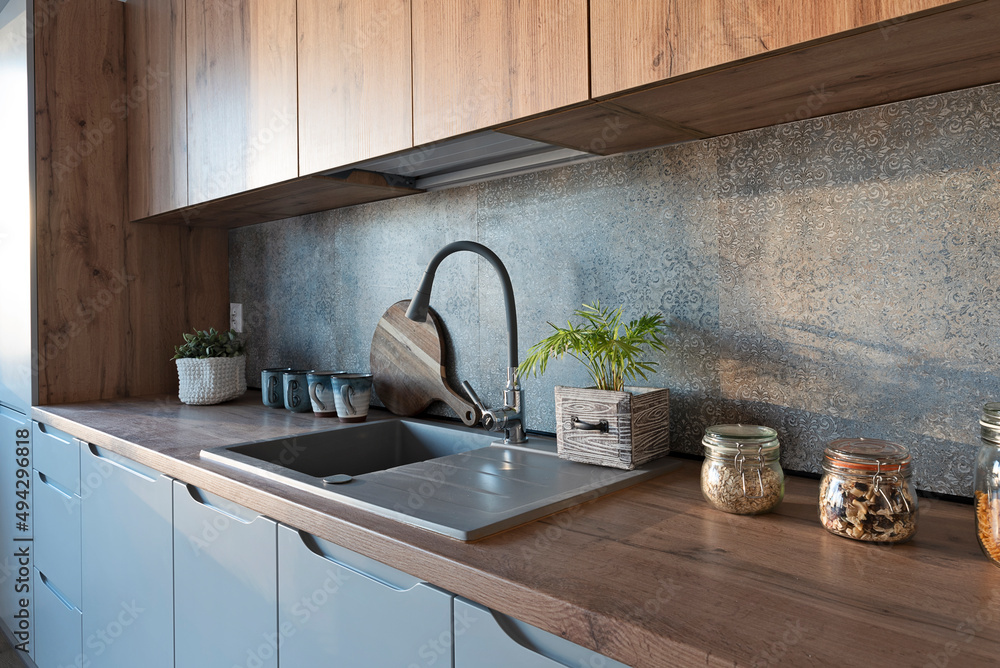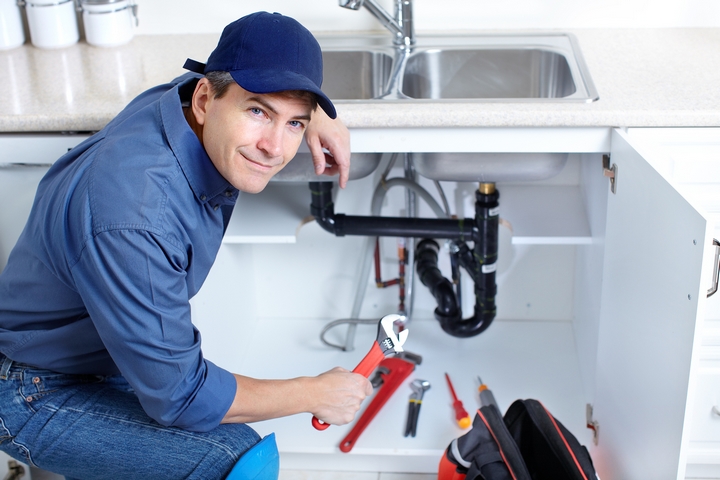Insights into the Future of Plumbing: Developments and Advancements
Insights into the Future of Plumbing: Developments and Advancements
Blog Article
This great article below about The Future Of Plumbing: Trends And Technologies To Watch is incredibly remarkable. Read it for yourself and figure out what you think of it.

Introduction
The plumbing industry is undertaking a transformative stage driven by technological developments and growing worries for sustainability and performance. This post discovers arising fads and technologies forming the future of pipes.
Regulative Landscape
Governing structures play a crucial role fit the fostering of pipes advancements, with requirements and codes controling every little thing from water effectiveness to item security. As innovations continue to advance, regulatory bodies have to adapt to guarantee customer security and ecological stewardship.
Future Outlook
The future of pipes is defined by continued technology and integration with various other markets such as IoT, renewable energy, and structure automation. By accepting sustainable methods, leveraging arising modern technologies, and prioritizing user-centric style, the plumbing sector is positioned to attend to the progressing demands of society while reducing its environmental impact.
Increased Reality in Pipes
Enhanced Fact (AR) modern technology is reinventing pipes by providing specialists with real-time visual assistance for troubleshooting and repair service tasks. AR-enabled clever glasses or mobile applications overlay electronic info onto the physical setting, assisting plumbing professionals imagine pipeline formats, identify surprise leakages, and implement repair services with accuracy.
Influence of 3D Printing
The arrival of 3D printing has presented brand-new possibilities in making plumbing components. From custom-made fixtures to complex pipeline fittings, 3D printing permits quick prototyping and on-demand production, reducing preparations and allowing better customization in plumbing design.
Health And Wellness Features
In action to heightened concerns for health and safety, plumbing components are including features such as antimicrobial surface areas, touchless operation, and self-cleaning mechanisms. These advancements not only improve hygiene but also promote user comfort and ease.
Hygiene-focused Components
Touchless faucets, self-sanitizing commodes, and antimicrobial surfaces are becoming significantly widespread in domestic and business settings, lessening the risk of bacterium transmission and promoting a cleaner, healthier setting.
Water Top Quality Surveillance
Improvements in water top quality surveillance innovations enable homeowners to keep an eye on the purity and safety and security of their water supply in real-time. Smart water high quality sensors can spot pollutants, pH degrees, and temperature variants, empowering individuals to take proactive measures to make sure water safety.
Remote Plumbing Providers
Remote diagnostics and digital help are transforming the method pipes services are supplied. Via video conferencing and remote access modern technologies, plumbings can fix issues, provide guidance for DIY repair services, and even carry out remote examinations, supplying higher availability and ease to house owners.
Challenges and Opportunities
While pipes technologies hold tremendous promise, they also present difficulties such as data privacy issues, regulatory conformity, and the need for workforce training. Resolving these challenges needs collaboration between market stakeholders and governing bodies to make certain risk-free and accountable execution of brand-new technologies.
Smart Pipes Solutions
Integrating smart innovation right into plumbing systems allows remote monitoring, leakage discovery, and automated maintenance. Smart sensors and IoT (Net of Things) gadgets enable home owners and plumbings to keep an eye on water usage and discover problems in real-time, bring about extra effective source management and aggressive maintenance.
Water Performance Solutions
With enhancing emphasis on water conservation, ingenious options are being established to reduce water waste in pipes systems. High-efficiency fixtures, greywater recycling systems, and smart irrigation controllers are amongst the modern technologies helping customers minimize their water impact while keeping comfort and convenience.
Sustainable Products
The change in the direction of sustainability reaches plumbing products, with a growing choice for green alternatives. Eco-friendly piping products, such as PEX (cross-linked polyethylene) and HDPE (high-density polyethylene), offer longevity and resistance to deterioration without compromising environmental integrity.
Anticipating Maintenance
Predictive maintenance strategies leverage information analytics and machine learning formulas to prepare for and protect against pipes concerns before they take place. By assessing historical information and efficiency metrics, anticipating maintenance algorithms can determine patterns and abnormalities, enabling proactive treatments to stay clear of pricey repair work and interruptions.
Final thought
Finally, the future of plumbing is defined by a merging of modern technology, sustainability, and user-centric design. By welcoming clever solutions, sustainable products, and proactive maintenance practices, the plumbing market can boost efficiency, promote security, and add to a much more lasting future.
The Future of Plumbing: Trends and Innovations to Watch
Introduction to Future Plumbing Trends
The future of plumbing is being shaped by several key factors, including technological advancements, environmental concerns, and changing consumer expectations. These factors are driving the development of new products, services, and practices that enhance the efficiency, sustainability, and convenience of plumbing systems.
Key Trends and Innovations in Plumbing
Smart Plumbing Systems: The integration of smart technology into plumbing systems is transforming the way we manage water usage and detect issues. Smart leak detectors, automated water shut-off valves, and smart faucets are just a few examples of how technology is enhancing plumbing systems. These devices provide real-time data and remote control capabilities, allowing homeowners to monitor and manage their water usage more effectively. Water Conservation and Efficiency: With increasing concerns about water scarcity, there is a growing emphasis on water conservation and efficiency. Innovations such as low-flow fixtures, greywater recycling systems, and rainwater harvesting are becoming more popular. Plumbers are adopting these technologies to help customers reduce their water consumption and save on utility bills. Sustainable Materials: The use of sustainable materials in plumbing systems is gaining traction. This includes the adoption of recyclable and biodegradable materials, as well as the use of non-toxic and eco-friendly products. Sustainable materials help reduce the environmental impact of plumbing systems and promote long-term sustainability. Energy-Efficient Water Heaters: Advances in water heating technology are leading to the development of more energy-efficient systems. Tankless water heaters, solar water heaters, and heat pump water heaters are becoming more prevalent. These systems offer significant energy savings and reduce the carbon footprint of homes and businesses. Trenchless Technology: Trenchless technology is revolutionizing the way plumbing repairs and installations are conducted. This method allows for the repair or replacement of pipes without extensive excavation, minimizing disruption and reducing costs. Techniques such as pipe bursting and cured-in-place pipe (CIPP) lining are gaining popularity. Health and Safety: The focus on health and safety is driving innovations in plumbing systems. Touchless faucets and fixtures, antimicrobial materials, and improved water filtration systems are being developed to enhance hygiene and protect public health. Plumbers are adopting these innovations to meet the growing demand for safer and healthier plumbing solutions. Remote Diagnostics and Monitoring: The ability to diagnose and monitor plumbing systems remotely is becoming increasingly important. Remote diagnostic tools and sensors allow plumbers to identify issues and perform maintenance without the need for on-site visits. This enhances efficiency and reduces the need for costly emergency repairs. Impact of Future Trends on the Plumbing Industry
Enhanced Efficiency: The adoption of smart technology and energy-efficient systems will enhance the efficiency of plumbing systems. This will lead to reduced water and energy consumption, lower utility bills, and improved performance. Sustainability: The focus on sustainability will drive the development and adoption of eco-friendly plumbing solutions. This will contribute to the conservation of natural resources, reduction of waste, and protection of the environment. Improved Customer Experience: The integration of technology and innovative solutions will improve the customer experience. Homeowners will have greater control over their plumbing systems, access to real-time data, and the ability to manage their water usage more effectively. Increased Demand for Skilled Plumbers: The adoption of new technologies and materials will require plumbers to acquire new skills and expertise. There will be an increased demand for skilled plumbers who are knowledgeable about the latest trends and innovations. Cost Savings: The use of efficient and sustainable plumbing solutions will result in cost savings for both homeowners and businesses. Reduced water and energy consumption, lower maintenance costs, and fewer emergency repairs will contribute to overall affordability. Preparing for the Future of Plumbing
Stay Informed: Keep up-to-date with the latest trends and innovations in the plumbing industry. Attend industry conferences, participate in training programs, and engage with manufacturers to stay informed. Invest in Training: Ensure that you and your team are trained in the latest technologies and installation techniques. This will enable you to offer cutting-edge solutions to your customers and stay competitive in the market. Promote Sustainable Solutions: Highlight the benefits of eco-friendly and energy-efficient plumbing solutions to your customers. Educate them about the advantages of adopting sustainable practices and products. Leverage Technology: Embrace smart technology and remote diagnostic tools to enhance your services. Offer remote monitoring and maintenance options to provide added convenience and value to your customers. Collaborate with Manufacturers: Partner with manufacturers of innovative plumbing products to gain access to the latest solutions and technical support. This can also provide opportunities for joint marketing efforts. Focus on Customer Education: Educate your customers about the benefits and functionality of new plumbing technologies. Provide guidance on how to use smart systems and maintain sustainable plumbing solutions. Conclusion
The future of plumbing is being shaped by exciting trends and innovations that promise to enhance efficiency, sustainability, and convenience. By staying informed and embracing these changes, plumbers can provide superior services to their customers and contribute to a more sustainable future. The adoption of smart technology, sustainable materials, and energy-efficient systems will drive the evolution of the plumbing industry, creating new opportunities and challenges. By preparing for the future, plumbers can ensure their success in a rapidly changing market.

I hope you enjoyed our piece on The Future of Plumbing: Trends and Innovations to Watch. Thanks for taking the time to read our blog post. Those who enjoyed reading our article if you please remember to pass it around. Thank you for your time invested reading it.
Click Here Report this page